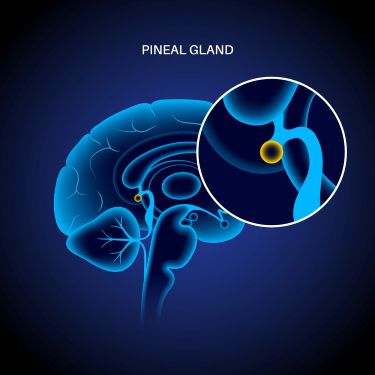
How to Activate Pineal Gland: Natural Ways to Awaken Your Inner Balance
The pineal gland is a small, pea-shaped organ nestled deep in the brain. Science recognizes it as the producer of melatonin, the hormone that regulates sleep and wake cycles. Yet throughout history, the pineal gland has carried far greater significance. Ancient traditions called it the “third eye,” a gateway to intuition, clarity, and deeper awareness.
Today, many people are asking how to activate the pineal gland not only for better sleep, but for improved well-being, calm, and focus. While scientific research is still uncovering its mysteries, natural practices can help you nurture this vital gland and restore harmony in your body.
When we approach this question from a holistic lens, we recognize that the pineal gland does not function in isolation. It is deeply connected to our nervous system, our circadian rhythm, and even our emotional health. Supporting it, then, is not about forcing activation but about cultivating the right internal and external environment.
Why the Pineal Gland Matters
 Your pineal gland influences circadian rhythms, which affect mood, energy, and overall health. Disruption — often from excess stress, artificial light, or chemical exposure — can leave you feeling foggy, restless, or unbalanced. In traditional wisdom, this was seen as a “closing” of the third eye. Supporting the gland naturally may restore balance in ways both subtle and profound.
Your pineal gland influences circadian rhythms, which affect mood, energy, and overall health. Disruption — often from excess stress, artificial light, or chemical exposure — can leave you feeling foggy, restless, or unbalanced. In traditional wisdom, this was seen as a “closing” of the third eye. Supporting the gland naturally may restore balance in ways both subtle and profound.
Modern life places unique demands on the pineal gland. Constant screen exposure, artificial lighting late at night, and overstimulation of the nervous system interfere with its natural rhythms. Many of us rarely experience true darkness or the calming signals that tell the body when it is time to rest. Over time, this can dull not only sleep quality but also the sense of clarity that ancient traditions associated with an “awakened” gland.
By tending to this overlooked part of the brain, we may experience a wide range of benefits. Balanced melatonin production supports better sleep, which then impacts hormone regulation, immune health, and even emotional resilience. From a more traditional perspective, an activated pineal gland encourages intuition, centeredness, and the quiet awareness that helps us feel connected to life’s natural flow.
 Natural Ways to Activate the Pineal Gland
Natural Ways to Activate the Pineal Gland
1. Sunlight Exposure
Natural light is the pineal gland’s ally. Regular morning sunlight helps regulate melatonin production, stabilizes sleep cycles, and promotes energy throughout the day.
Beyond this, sunlight signals to the body when to awaken and when to rest. Exposure to natural cycles of light and dark helps the pineal gland maintain its rhythm, much like tuning an instrument to the right frequency. This is why early morning light is especially potent—it gently instructs the body’s inner clock, improving alertness during the day and rest at night.
Historically, people lived in harmony with the sun’s rising and setting, which naturally guided their pineal function. Today, however, indoor lifestyles and artificial lighting have severed this link. Making a conscious effort to spend time outside—whether through a morning walk, gardening, or simply opening your blinds—can begin to restore this connection.
Even in colder months, exposure to natural daylight is beneficial. While the warmth of the sun may not always be available, the light itself still carries the signals the pineal gland needs. Some find that supplementing with full-spectrum lamps mimics this effect during long winters, though nothing fully replaces time spent under the open sky.
2. Mindful Practices
Meditation, yoga, and breathwork have long been associated with awakening the third eye. These practices calm the nervous system, reduce stress, and foster inner clarity, creating conditions for the pineal gland to function optimally.
The simple act of sitting quietly and focusing on the breath helps shift the body out of its stress response. Stress hormones like cortisol can interfere with melatonin production, leaving the pineal gland sluggish. By lowering stress naturally, mindful practices create an inner environment that nurtures pineal activity.
Yoga, with its blend of movement, breath, and focus, further supports circulation and oxygenation of the brain. In traditional yogic philosophy, specific postures and breathing patterns were believed to channel energy toward the third eye, stimulating awareness and deeper perception. While science may not fully confirm this, many practitioners report increased clarity, better focus, and improved sleep.
Breathwork in particular has gained attention as a powerful tool for balancing the nervous system. By slowing and deepening the breath, you signal to your body that it is safe, which encourages the pineal gland to return to its natural rhythms. Over time, this can cultivate a sense of calm awareness, the very state ancient traditions saw as a sign of activation.
3. Herbal Support
Certain herbs — such as gotu kola, ginkgo biloba, and lemon balm — have been used in traditional medicine to calm the mind and enhance awareness. While not direct stimulants of the pineal gland, they support the body’s natural rhythms, which in turn benefits glandular health.
- Gotu kola has long been revered in Ayurvedic medicine for its ability to sharpen memory and expand awareness. Some traditions specifically link it to the third eye, suggesting it helps open pathways of clarity. Its gentle tonifying effect on the nervous system makes it a valuable ally for those seeking to support the pineal gland.
- Ginkgo biloba, on the other hand, is celebrated for improving circulation, particularly to the brain. Enhanced blood flow ensures that the pineal gland, like all organs, receives the nourishment and oxygen it needs. This may not be “activation” in the mystical sense, but it is a very real support for its function.
- Lemon balm offers another layer of benefit. Known for its calming properties, it reduces restlessness and anxiety, both of which can disrupt natural rhythms. By promoting relaxation and sleep quality, lemon balm indirectly strengthens the gland’s melatonin cycle. This gentle approach aligns perfectly with a naturalist view: rather than forcing change, we create balance through supportive herbs.
4. Reduce Fluoride and Toxins
A common belief is that fluoride and certain environmental toxins may affect the pineal gland over time. While research is ongoing, choosing clean water, natural foods, and avoiding unnecessary chemicals is a wise step for overall wellness.
The idea that fluoride “calcifies” the pineal gland circulates widely in holistic circles. While scientific studies are limited, it is true that environmental toxins tend to accumulate in this gland more than in other parts of the body. Being mindful of water quality, choosing fluoride-free toothpaste, and filtering drinking water are simple ways to reduce potential burden.
Equally important is minimizing exposure to pesticides, heavy metals, and processed foods. These substances can strain the body’s detoxification systems, indirectly affecting glandular health. By choosing organic produce where possible and favoring whole foods, you lessen the toxic load and give the pineal gland space to thrive.
Supporting the liver and kidneys through herbs like milk thistle, dandelion root, and nettle can further aid detoxification. While these do not target the pineal gland directly, they ensure the body’s cleansing pathways remain strong, protecting sensitive tissues from accumulation over time.
5. Quality Sleep
Deep, restorative sleep is both the product of a healthy pineal gland and a way to nourish it further. Creating a sleep-friendly environment — dark, cool, and quiet — allows melatonin to do its restorative work.
Many people underestimate the impact of artificial light at night. Blue light from screens, in particular, signals the brain to stay alert, suppressing melatonin production. By dimming lights in the evening, using amber filters on devices, or avoiding screens altogether before bed, you create conditions that naturally enhance pineal activity.
Related: I Do This Every Night to Fall Asleep Faster
Establishing a consistent bedtime routine also strengthens circadian rhythm. Going to sleep and waking up at the same time each day trains the body’s internal clock. Over time, this helps the pineal gland anticipate cycles of darkness and light, boosting melatonin secretion when it is most needed.
Additional practices such as drinking calming teas (like chamomile or valerian), using blackout curtains, and limiting caffeine intake all further support deep rest. In return, the pineal gland remains in balance, continuing its cycle of melatonin release that anchors your health and well-being.
A Gentle Note of Caution
While “activation” often sounds mystical, the reality is simpler: the pineal gland thrives when your body is aligned with nature. There are no quick fixes or shortcuts, only steady practices that promote balance. Be cautious of products claiming instant activation or spiritual awakening; true health grows slowly and naturally.
It’s also important to remember that the pineal gland is only one piece of a much larger system. Focusing on overall health — digestion, circulation, stress management — indirectly supports it more than any single supplement or practice. Approaching activation as a whole-body process keeps expectations grounded and outcomes more sustainable.
Above all, the safest path is to avoid extremes. Practices like meditation, herbal remedies, and natural light exposure are gentle and supportive, but approaches that claim to “force” the gland open may do more harm than good. Trusting slow, natural rhythms is the most reliable way forward.
Final Thoughts
Learning how to activate the pineal gland is less about unlocking a secret switch and more about living in harmony with nature. Through sunlight, mindful practices, herbal allies, and toxin reduction, you create the environment where this small but mighty gland can flourish. In turn, you may discover a deeper sense of clarity, peace, and resilience in daily life.
As with all holistic practices, consistency is key. The pineal gland responds slowly, over weeks or months of steady support. Rather than chasing instant results, approach the process as part of a lifestyle rooted in patience and awareness.
In the end, activation is not just about the gland itself but about aligning with the rhythms of the natural world. By restoring this balance, you awaken more than the pineal gland — you awaken the deeper harmony that has always been waiting within you.
You may also like:
 The Hidden Danger of Swollen Glands
The Hidden Danger of Swollen Glands
How to Perform a Complete Breast Exam at Home (Video)
The Timeless Benefits Of Bitter Herbs – Ultimate Guide!
Kratom Explained: Nature’s Pain Reliever or Hidden Danger?








 Natural Ways to Activate the Pineal Gland
Natural Ways to Activate the Pineal Gland

